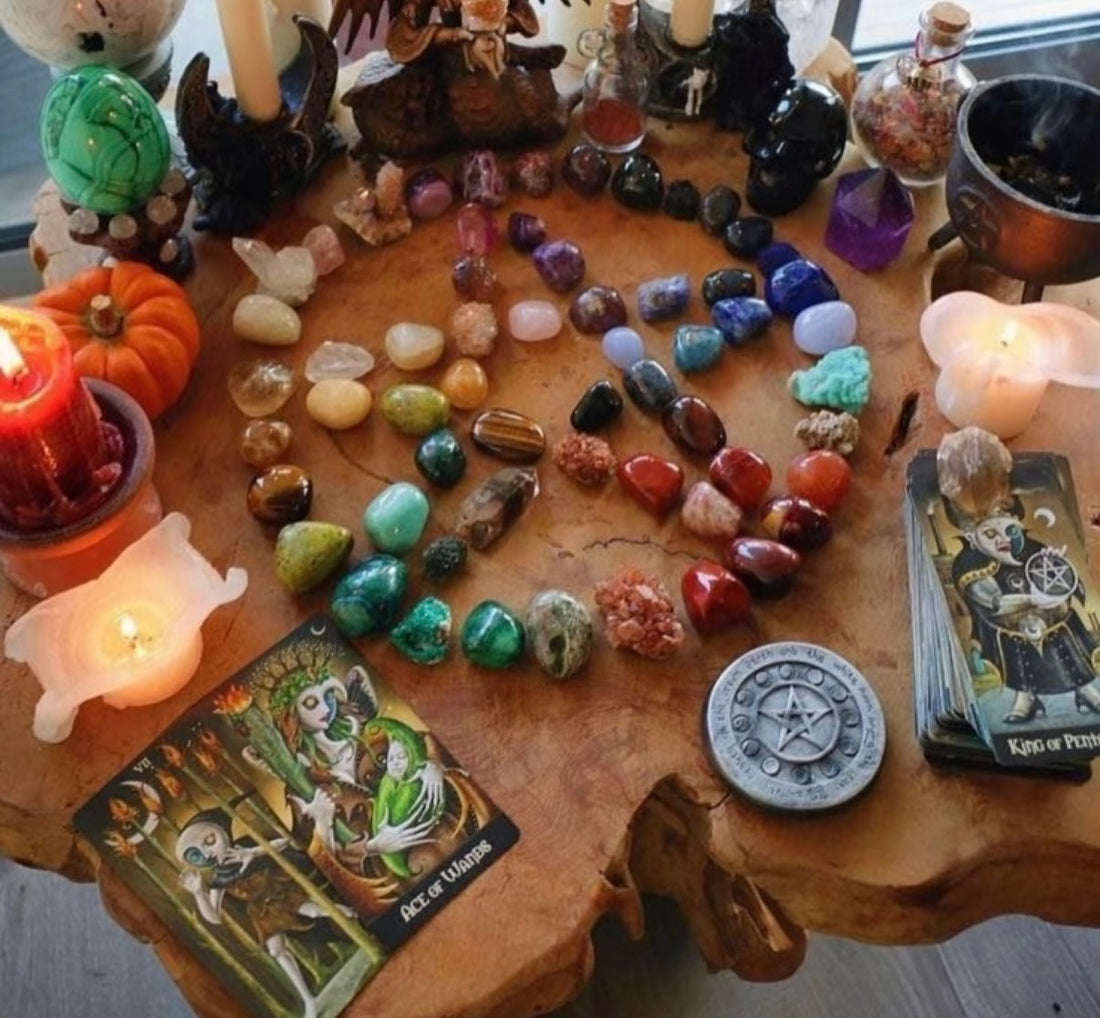
The Hidden History of Crystals: From Ancient Civilizations to Modern Metaphysics
يشارك
In today's wellness and spiritual practices, crystals are celebrated for their beauty and energy. Yet, their allure is not a modern trend but a thread woven through the very fabric of human history. From the royal tombs of pharaohs to the sacred rituals of ancient healers, crystals have been revered as tools of power, protection, and profound connection to the divine. This article traces their extraordinary journey across millennia and civilizations.
1. Sacred Stones of the Ancients: Divinity and Power
Long before they adorned modern altars, crystals were integral to the spiritual and daily lives of early civilizations.
· Ancient Egypt: The Pharaohs' Spiritual Technology Egyptian artisans masterfully used crystals for both symbolic and practical purposes. Lapis Lazuli, imported from distant Afghanistan, was considered more precious than gold. It symbolized the night sky and the heavens, ground into powder for iconic blue pigments in eye makeup and tomb paintings. It was used in the burial mask of Tutankhamun to represent divine wisdom. Turquoise was associated with protection and health, widely used in jewelry and amulets like the scarab beetle. Clear Quartz was carved into seals and vessels, believed to amplify intentions and connect the physical world to the afterlife.
· Ancient Mesopotamia: Talismans of Protection In the world's earliest urban civilizations, crystals like Carnelian and Jasper were engraved with intricate designs and worn as cylinder seals and amulets. They were believed to ward off evil spirits, bring courage in battle, and ensure success in business ventures.
· Ancient Greece: The Clarity of the Gods The word "crystal" itself comes from the Greek word "krystallos," meaning "ice." The Greeks believed that Clear Quartz was eternal ice, frozen so deeply by the gods that it could never melt. Amethyst, meaning "not intoxicated" (a-methystos), was popularly used in drinking vessels and worn as amulets to prevent drunkenness and promote a clear, sober mind.
· Ancient China: The Jade Empire While not a crystal in the mineralogical sense, Jade (nephrite) held a parallel and supreme status in Chinese culture for over 8,000 years. It was revered as the embodiment of the Confucian virtues of wisdom, justice, compassion, modesty, and courage—the mark of a noble character. Jade burial suits were created for royalty in the belief that the stone would ensure physical immortality and spiritual passage. Other crystals like Rose Quartz were used in medicinal practices and carved into artifacts to attract love and harmony.
2. The Eastern Bridge: Ayurveda and Traditional Medicine
In India, crystals were seamlessly incorporated into the ancient medical system of Ayurveda. Each stone was associated with specific chakras (energy centers) and planetary influences. Moonstone was linked to intuition and feminine energy, Ruby to vitality and the heart, and Sapphire to wisdom and clarity. They were used in elixirs, worn as jewelry, and placed on the body to balance doshas (bodily energies) and promote holistic healing.
3. The Medieval Shift: Alchemy, Science, and Secrecy
During the Middle Ages and Renaissance, the study of crystals moved into the realms of alchemy and early science. Alchemists sought the Philosopher's Stone, often depicted as a red crystal, believing it could transmute base metals into gold and grant eternal life. While mysticism persisted, this period also saw the beginnings of mineralogy—the scientific classification of stones based on their physical properties, laying the groundwork for modern geology.
4. The Modern Revival: From Counterculture to Mainstream Mindfulness
The 20th century witnessed a dramatic resurgence. The counterculture movement of the 1960s and 70s rediscovered Eastern philosophies and indigenous spiritual practices, bringing crystals back into the spotlight as tools for consciousness expansion and healing. This era catalyzed the modern crystal metaphysics movement, which has now flowed into the mainstream, embraced as aids for meditation, mindfulness, and intentional living.
Conclusion: A Timeless Connection
The history of crystals is a mirror reflecting humanity's enduring quest for meaning, connection, and well-being. They have been a constant companion on our journey—as symbols of power, instruments of healing, and bridges to the spiritual realm. Understanding this deep and rich history adds layers of significance to the crystals we hold today. We are not just keeping up with a trend; we are participating in an ancient, cross-cultural dialogue between humanity and the mineral kingdom, one that continues to evolve and inspire.
